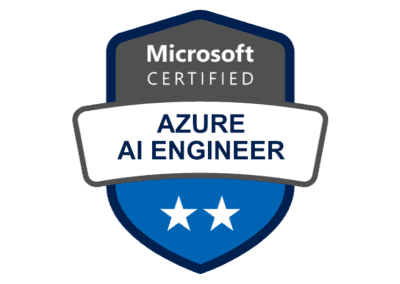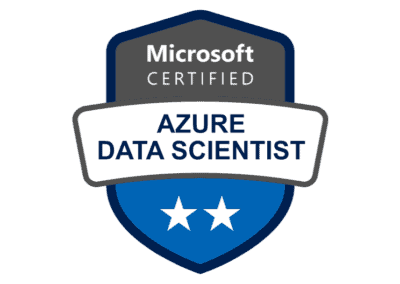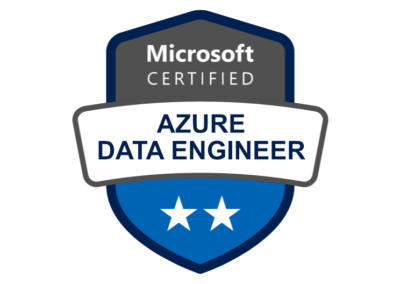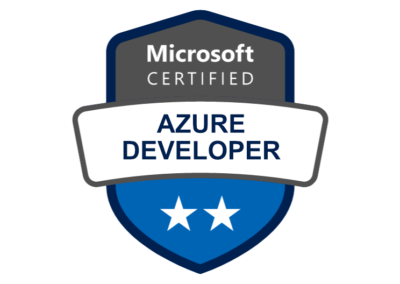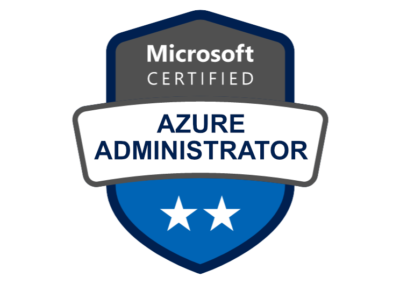
DP-203: Microsoft Azure Data Engineer
In this four-day training, you will learn about data engineering an use batch- and real-time analytical solutions using Azure data platform technologies. The training will introduce you to Azure core compute and storage technologies, how to ingest data into Azure Synapse Analytics or Azure Databricks, and how to design data loading pipelines with Azure Data Factory or Azure Synapse pipelines. You’ll also learn various ways to transform and analyze data, how to secure your data infrastructure, and how to create real-time analytical solutions in the Azure cloud.
This training prepares you for the Azure Data Engineer exam and certification.
Here’s What You’ll Get

Live Training Days

Lab Assignments

Azure Sandbox

Practice Exam

Exam Voucher

Day Lab Access
Training Details
In this four-day training, you will learn about data engineering and work with batch- and real-time analytical solutions using Azure data platform technologies.
The training will introduce you to Azure compute and storage services that you’ll use to build an analytical solution. You’ll learn how to ingest data into Azure Synapse Analytics or Azure Databricks using Azure Data Factory or Azure Synapse pipelines. You’ll also learn how to extract, transform and load data into a data warehouse and how to secure your data infrastructure in the cloud.
As part of this training, you’ll receive an Azure Pass with credits to spend on your own cloud services. The pass is valid for 30 days.
Name: DP-203: Microsoft Azure Data Engineer
Format: Classroom
Content: training manual, online lab, Azure cloud credit, practice exam, and an exam voucher
Requirements: a laptop with a web browser installed. Chrome or Edge is recommended.
Support: Live classroom support
Associated certification: Microsoft Azure Data Engineer
Training Curriculum
Explore Azure data services
Azure Synapse Analytics
Azure Databricks
Azure Data Lake
The Delta Lake architecture
Azure Stream Analytics
Lab exercises
Build a streaming & batch pipeline
Create a Delta Lake
Index data lake storage
Synapse Analytics serverless pools
Synapse Analytics pool capabilities
The serverless SQL pool
Querying data
Creating and using external tables
Securing data
Lab exercises
Query Parquet data
Create external tables to read data
Create views
Secure access to data
Configure role-based access control
Azure Databricks
Azure Databricks
Read and write data
Working with DataFrames
Advanced dataframe functions
Lab exercises
Explore data with DataFrames
Cache data for faster queries
Remove duplicate data
Working with date/time values
Remove and rename columns
Aggregate data
Apache Spark notebooks
Apache Spark in Azure Synapse Analytics
Ingest data into Spark notebooks
Transform data with DataFrames
Integrate Spark and SQL pools
Lab exercises
Explore data in Synapse Studio
Ingest data into a Spark notebook
Transform data with DataFrames
Integrate Spark and SQL pools
Ingest & load data warehouse data
Data loading best practices
Petabyte-scale data ingestion with Azure Data Factory
Lab exercises
Ingest data with Azure Synapse pipelines
Import data with Polybase and COPY
Use data loading best practices
Azure pipelines
Data Factory and Synapse pipelines
Code-free data transformation at scale
Lab exercises
Transform data with Azure pipelines
Build a pipeline to load a malformed CSV file
Create a mapping data flow
Data orchestration in Azure pipelines
Orchestrate data movement & transformation
Set up linked services
Execute notebooks from a pipeline
Lab exercises
Integrate data from notebooks in an Azure Data Factory or Synapse pipeline
End-to-end security
Secure a data warehouse
Configure & manage secrets in Key Vault
Implement compliance controls
Lab exercises
Secure Synapse Analytics infrastructure
Secure workspace & managed services
Secure workspace data
Hybrid Transactional Analytical Processing (HTAP)
Designing HTAP solutions
Configure HTAP in Cosmos DB
Query Cosmos with a Spark pool
Query Cosmos with a SQL pool
Lab exercises
Configure HTAP in Cosmos DB
Query Cosmos with Apache Spark
Query Cosmos with serverless SQL pools
Azure Stream Analytics
Azure Event Hub
Azure Stream Analytics
Ingest data with Stream Analytics
Lab exercises
Process real-time data
Using windowing functions
Scaling Stream Analytics jobs
Repartitioning input streams
Real-time data in Azure Databricks
Process real-time data with Databricks
Lab exercises
Explore structured streaming
Stream a file to HDFS
Using sliding windows
Applying watermarking
Connecting to Event Hubs
Request A Classroom Training
Feel free to request a classroom training with me by filling in this contact form. I will contact you asap to discuss your business requirements, team size and preferred location of the training to make sure your team members get what they need.
A typical classroom training can usually be scheduled within 30 days and can accommodate up to 15 people on-site or online.
Looking For Something Else?
CHECK OUT MY OTHER MICROSOFT ASSOCIATE TRAINING COURSES
Is this classroom training not what you’re looking for? Then please check out my other Microsoft Associate training courses.

Adam Lindqvist
Frequently Asked Questions
- Classroom Training
- Microsoft Training
- Online Training
- Misc

